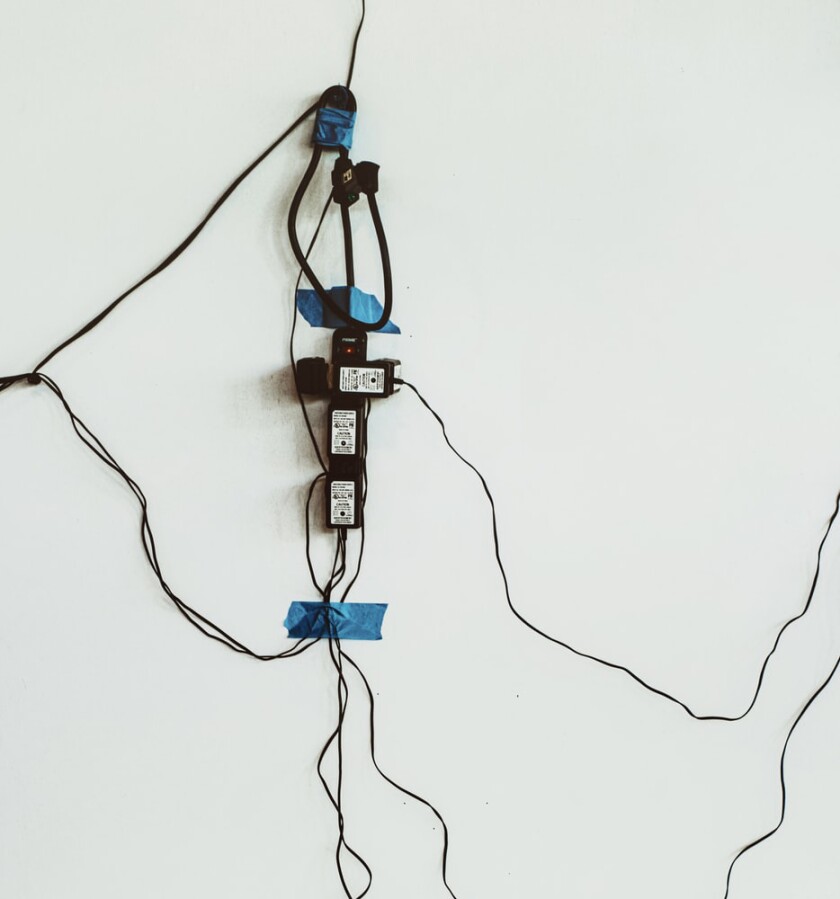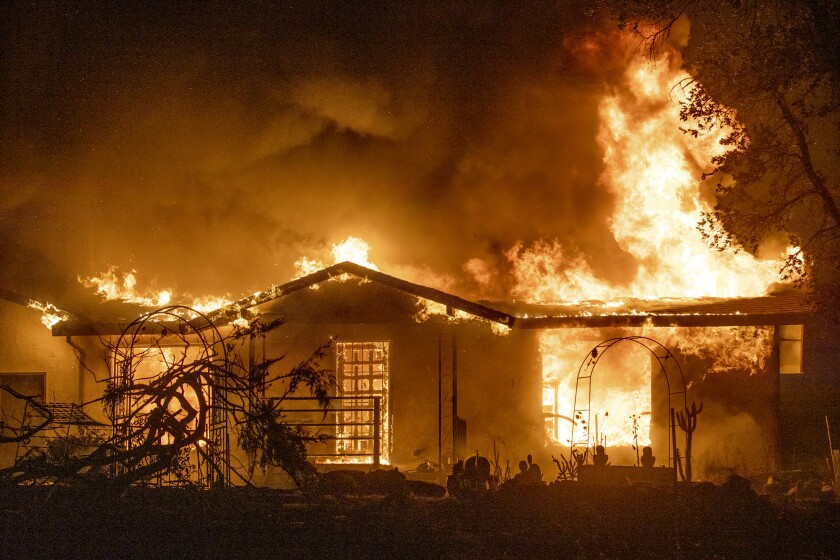
Ryan Lager, who works for the Honolulu Fire Department, came into the Ke Alaka‘i office for the routine fire safety checks that happen periodically on the BYU–Hawaii campus. Upon inspecting the office, he suggested moving the microwave because it was plugged into an extension cord. He said it was a necessity to have the microwave plugged into a direct outlet to reduce the fire hazard.
According to the Red Cross website, home fires claim seven lives every day, but this can be prevented by following simple fire prevention steps, such as being sure the smoke alarm is working properly and having a proper escape plan.
Cris Bartolome, from Honolulu, has been the fire captain for the Honolulu Fire Department about one year, and he said he decided to pursue a career in firefighting because of his passion for helping others.
“I like to help people and seeing them do well. The adrenaline and excitement of firefighting was too intriguing to pass up, as well as the different experiences that I knew I couldn’t have in an office.”
Besides making sure the microwave is plugged into a direct outlet, Bartolome said unattended cooking is the No. 1 cause of structure fires. He advised to never leave the kitchen while cooking.
According to the National Fire Protection Association, about 173,000 kitchen fires happen in the United States each year. Of these fires, about 550 of them were fatal, 820 resulted in injury and about $1.2 billion in damage was done. The good news is these fires are highly preventable.
Besides never leaving cooking unattended, Bartolome suggested to avoid cooking when feeling tired, whether the drowsiness comes from medication, alcohol or life stresses and responsibilities.
In addition to keeping microwaves from being plugged into extension cords, there are other safety precautions which should be taken. Bartolome explained, “Using temporary wirings, such as extension cords or power strips as permanent wiring is unsafe.” This advice may prove particularly important to BYUH students who may rely on such wiring to power their devices.
The Consumer Product Safety Commission website says extension cords are dangerous because they have a high potential of overheating or becoming damaged, which both pose high risks for fires.
Bartolome said people should be particularly wary of appliances that produce heat. He gave a few examples, such as a microwave, coffee maker, toaster oven, Instapot or slow cooker, advising these appliances should also be plugged into a direct outlet.

Obviously, he said this advice also applies to bigger everyday appliances such as the refrigerator, stove, dishwasher or air conditioning.
The Community Relations Office and Codes Enforcement section of the Honolulu Fire Department are involved in doing fire safety checks. He said dangerous scenarios, such as those described above, are typically what they come across when performing these checks.
While checking for fire hazards, Bartolome said they also try to take advantage of opportunities to educate the public about fire prevention.
He said, “Almost any fire not caused by Mother Nature is preventable. From kitchen fires where the occupant went to watch TV and fell asleep while cooking, to connecting multiple extension cords to power a fan causing a short and igniting surrounding flammable material.”
Bartolome explained there is more information about fire safety on the NFPA website. He said there are printouts for offices and businesses to put up. He suggested leaders should replace the print-out with an updated one each month and be sure their employees are educated about what is included in the notices.
These safety tip handouts cover topics such as grilling, pets, children and how to stay safe when traveling.
When grilling, NFPA advises people to use the grill far away from the home or tree branches, to keep the grill clean. Only light the grill once the lid is open and to keep children and pets at least 3feet away from the grill at all times.
In addition, the website says extension cords should be used for outdoor charcoal grills.
For propane grills, NFPA advises grillers to be sure to check for leaks by applying soap and water to the hose; if bubbles appear, the grill should be repaired before use. In addition, if the grill smells like gas, they should “immediately get away from the grill and call the fire department. Do not move the grill.”
Lastly, if the flame on the propane grill goes out, the advice is to turn off the grill and gas, and wait at least 5 minutes before attempting to use it again.

Regarding pets, the NFPA website says although pets give us comfort, friendship and unconditional love, pets and wild animals are responsible for starting about 750 home fires each year.
These fires involve cooking equipment, fireplaces and chimneys, space heaters, lamps, bulbs, wiring and candles.
The website advises people keep animals away from cooking equipment, candles, lamps and space heaters. In fact, it also suggests considering flameless candles.
Fireplaces are also a dangerous place for pets. It advises the public to also keep pets at least 3 feet away from the fireplace and cover it with tempered glass.
Another important piece of advice is to keep an eye on what pets chew up. It could be very dangerous if they chewed through electrical cords.
Lastly, the NFPA recommended pets be included in the family’s “wildfire evacuation plan.” It suggests to go so far as to “build an evacuation kit for each pet in our household” that can be easily transported. Heartbreakingly, the website also says people should never go back into a burning building to rescue a pet. They should alert a firefighter instead.
This goes along with NFPA’s advisement to always plan ahead. “You may have only a few minutes to get out safely once the smoke alarm sounds. Everyone needs to know what to do and where to go if there is a fire.” Despite the importance of keeping the household safe, only one in three households have implemented this practice, the website says.
The advice for having an escape plan applies even to college students who live either on or off campus, NFPA advises. When it comes to campus living, the website said students should never underestimate the importance of the smoke alarms and should check to make sure they work properly at least once a month.
“Roughly six out of seven fires in dormitories are started by cooking,” the website says. Such fires often occur after 5 p.m. or on weekends.
Luckily, the website offers some tips for how to create an effective evacuation plan. First, it suggests drawing a map of the home with all of the possible exit points so everyone in the home can become familiar with it. Two ways to get out of each room in the home would be ideal.
Household members should also be aware of where to go once they escape from the burning home, the website says. For perfect execution, the household should practice the drill at least twice a year using different escape routes.

When escaping, be sure to close all of the doors, as this may slow the spread of the fire, the NFPA admonishes online. The Red Cross website says household members should have a plan of being able to escape within two minutes.
In worst case scenarios, where the escape must be made when there is smoke in the home, the websites says the best way to safely do so is to duck down as low as possible while moving.
When it comes to protecting children, punishing children who misuse fire could actually make the problem worse. Instead, the —NFPA suggests close supervision, education and being a good example. Ultimately, talking openly with the child and establishing clear rules and consequences about fire safety is the best way to prevent a tragedy from occurring, it explains.
“All children are at risk for using fire unsafely. Many fires happen simply because matches and lighters are left within a child’s reach.”
NFPA even provides advice for how to participate in fire safety when on vacation. Suggestions include checking for smoke alarms and fire extinguishers and having an evacuation plan.
Bartolome said community members are welcome to contact the Honolulu Fire Department office and request a fire safety presentation for groups, such as businesses or clubs.
The HFD also participates in several annual safety campaigns, he said, including NFPA Fire Prevention Week, National Home Fire Sprinkler Week and Smoke Alarms for Everyone (SAFE). They are also on social media putting out the word on Fire Safety and Prevention, he said. They can be found on any platform by searching “Honolulu Fire Department.”
The Honolulu Fire Department also produces an annual Fire Fighter Safety Guide for all elementary schools across the state.
See the Adobe Spark version here.
